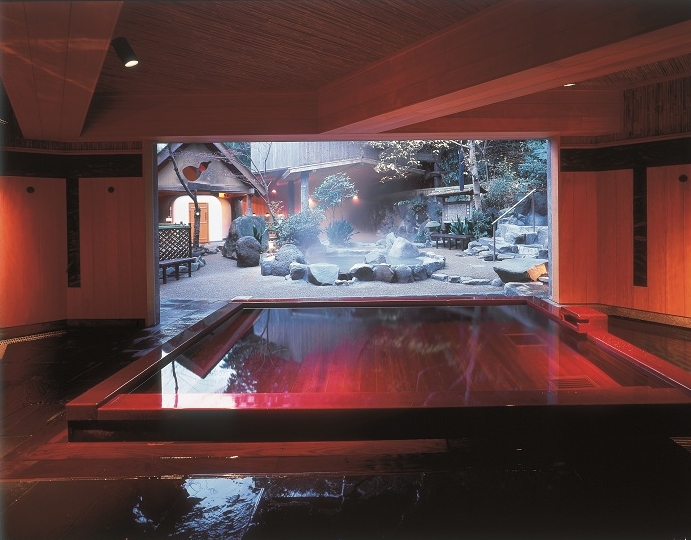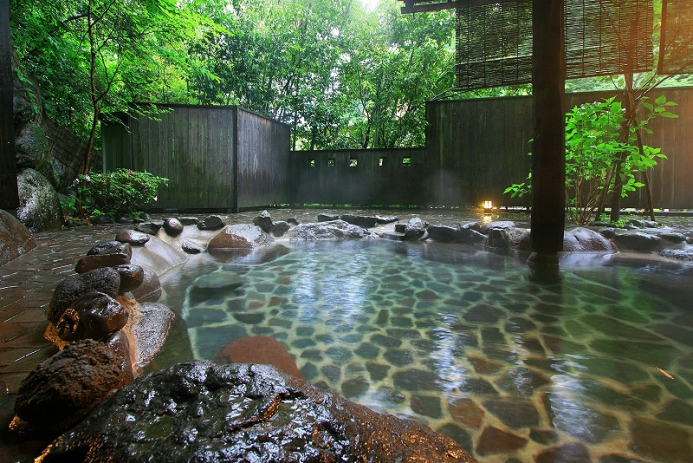Hakone Yumoto: A Day-Trip Onsen Guide
Hakone Yumoto is a renowned onsen town offering a variety of day-trip hot spring experiences. Located conveniently near the Hakone Yumoto Station, this town features many traditional ryokan and onsen facilities, making it perfect for a quick getaway to relax in the hot springs.
The Charm of Hakone Onsens
First opened in the Nara period, Hakone's onsen tradition spans over a millennium. With 20 different hot spring areas within Hakone, each spot offers unique water qualities and health benefits. Hakone Yumoto is the oldest and largest hot spring area in Hakone, known for its variety of onsen and healing properties.

The History of Hakone Yumoto
Ancient Beginnings
Hakone Yumoto's history as a hot spring destination dates back to the Nara period (710-794 AD), making it one of Japan's oldest onsen towns. Legend has it that the hot springs were discovered by a disciple of the famous monk Taicho in 757 AD. According to historical records, this disciple, named Jokyo, was sent to the Kanto region by the Emperor Shomu to perform purification rituals. Upon discovering the healing waters of Hakone Yumoto, he established the first onsen there, marking the beginning of its long history as a healing destination.
Edo Period Development
During the Edo period (1603-1868), Hakone Yumoto flourished as a popular stop for travelers along the Tokaido road, the main route connecting Edo (modern-day Tokyo) and Kyoto. The onsen provided a place for rest and recuperation for daimyo, samurai, and commoners alike. The development of inns and ryokan (traditional Japanese inns) began during this period, and some of these historical accommodations, such as Ichinoyu, still operate today.
Meiji Era Expansion
The Meiji era (1868-1912) brought modernization and increased accessibility to Hakone Yumoto. The introduction of the railway made it easier for people from Tokyo and beyond to visit the onsen town. The establishment of the Hakone Tozan Railway in 1919 further boosted its popularity, making it a favorite destination for those seeking the therapeutic benefits of the hot springs and the natural beauty of the Hakone region.
Post-War Revival
Following the devastation of World War II, Hakone Yumoto underwent significant reconstruction and modernization. The area saw a surge in both domestic and international tourism, driven by Japan's economic boom and the global fascination with Japanese culture and natural beauty. Many of the ryokan and onsen facilities were renovated and expanded to accommodate the growing number of visitors.
Modern Day
Today, Hakone Yumoto continues to be a premier onsen destination, attracting tourists from around the world. The town boasts over 40 ryokan and numerous public bathhouses, each offering unique bathing experiences. The onsen water is rich in minerals and is known for its healing properties, particularly in alleviating muscle pain, joint issues, and skin conditions.
Historical Landmarks and Cultural Heritage
- Sounji Temple: Founded in the early 16th century by the warlord Hojo Soun, this temple is a significant historical site in Hakone Yumoto. It serves as a reminder of the area's long-standing cultural and spiritual importance.
- Yosegi Zaiku (Marquetry): Hakone is also known for its traditional craft of yosegi zaiku, a type of marquetry that uses different woods to create intricate geometric patterns. This craft has been passed down through generations and remains a popular souvenir for visitors.
Geisha Culture
Hakone Yumoto also maintains a vibrant geisha culture, with the Hakone Yumoto Geisha Association organizing performances and cultural events. This tradition adds a unique cultural dimension to the onsen experience, allowing visitors to immerse themselves in the traditional arts of Japan.
Hakone Yumoto’s blend of ancient history, cultural heritage, and natural beauty continues to make it a beloved destination for those seeking relaxation, healing, and a connection to Japan’s rich past.
Hot Springs
Yumoto is known for easing shoulder pain and cold sensitivity, featuring many day-trip facilities.
Key Hot Spring Facilities
Manseikaku Ryokan: A three-story wooden ryokan with distinctive architecture. Offers a traditional bathing experience with scenic views of the Hayakawa Valley.
- Ichinoyu: Established in 1630, this ryokan is one of the oldest in Hakone Yumoto and has hosted numerous historical figures over the centuries. This historic ryokan is known for its large open-air baths and traditional Japanese-style architecture.
Ten-Sen-en: Offers 23-hour access to its rooftop open-air baths, providing stunning views of the surrounding nature. Guests can enjoy private rooms for relaxation and dining.
Hakone Pax Yoshino: Features private rest areas and open-air baths. Ideal for those seeking a private and leisurely onsen experience.
Yoshiike Ryokan: Known for its garden with a walking path and its open-air hot springs. Guests can enjoy a soak followed by a stroll through the beautifully maintained Japanese garden. Once the villa of a wealthy businessman, this ryokan features beautiful Japanese gardens and offers a glimpse into the luxurious lifestyle of Japan's elite during the Meiji era.
Yumoto Fujiya Hotel: Offers a unique open-air bath with views of the lush greenery. The relaxation lounge provides panoramic views of Hakone's mountains and beyond.
Yunosato Okada: Features "Kachofugetsu," baths that showcase the natural beauty of Hakone throughout the seasons.
Izu: A facility with the oldest source of hot spring water in Hakone, offering a variety of baths with different temperatures.
Tenzan Toyogi Village: A traditional onsen experience with hot springs that flow directly from the source.
Hakone No Yu: Allows visitors to bring their own food and drink, making it a perfect spot for a day-trip picnic and soak.
Hakone Yuryo: Provides a countryside hot spring experience with natural flowing water and spacious open-air baths.
Kappa Tengoku: The closest outdoor bath to the station, making it a convenient option for travelers.
Exploring Hakone Yumoto
Hakone Yumoto is not just about hot springs. The area around Hakone Yumoto Station is bustling with shops selling local crafts and delicacies. Explore traditional crafts like Yosegi Zaiku (marquetry), a famous local craft that makes for great souvenirs. Visit the Hakone Yumoto Geisha Association, where geishas practice traditional arts. Enjoy a variety of dining options, from fresh soba to tofu dishes, all made with Hakone’s pristine water.
Other Onsen Areas:
See our Hakone guide for information on
- Tonosawa: Offers scenic baths and historical sites like Ajisai-dera (Hydrangea Temple).
- Gora: Famous for its luxurious ryokan and beautiful seasonal landscapes.
- Miyanoshita: Home to traditional Japanese inns and shops.

Access
Hakone Yumoto is easily accessible:
- By Train: Odakyu Romancecar provides a direct route from Shinjuku to Hakone Yumoto in 85 minutes.
- By Car: From Tokyo and Yokohama, take the Odawara Atsugi Road for a scenic drive.
For a comprehensive and relaxing experience, consider staying overnight to fully enjoy the hot springs, local cuisine, and scenic beauty of Hakone Yumoto. Whether you’re visiting for a day or planning a longer stay, Hakone Yumoto promises a delightful retreat steeped in history, nature, and relaxation.
find your next getaway
Kumamoto
2 adults